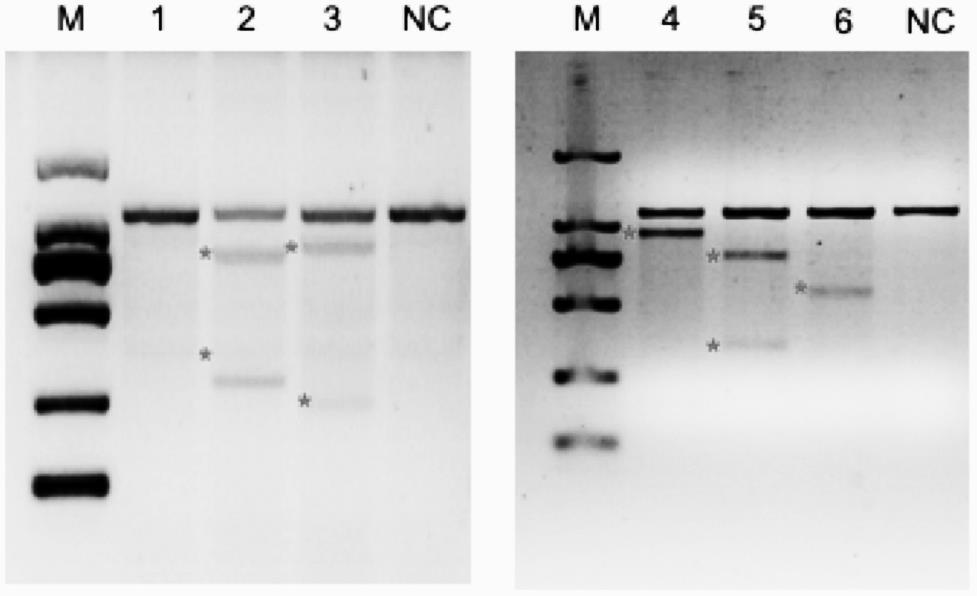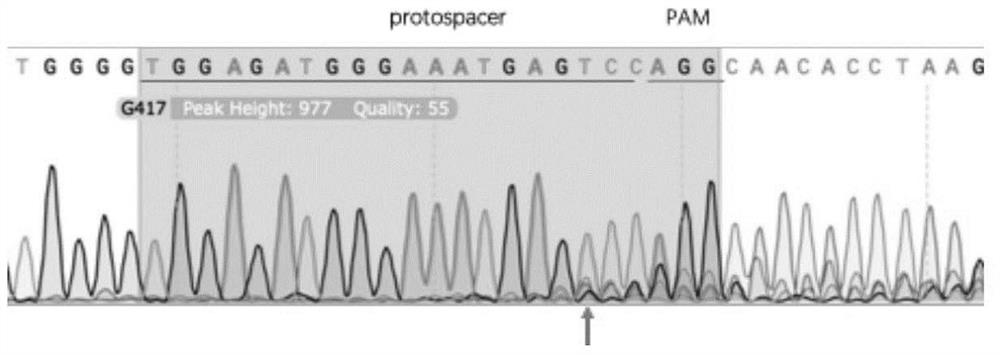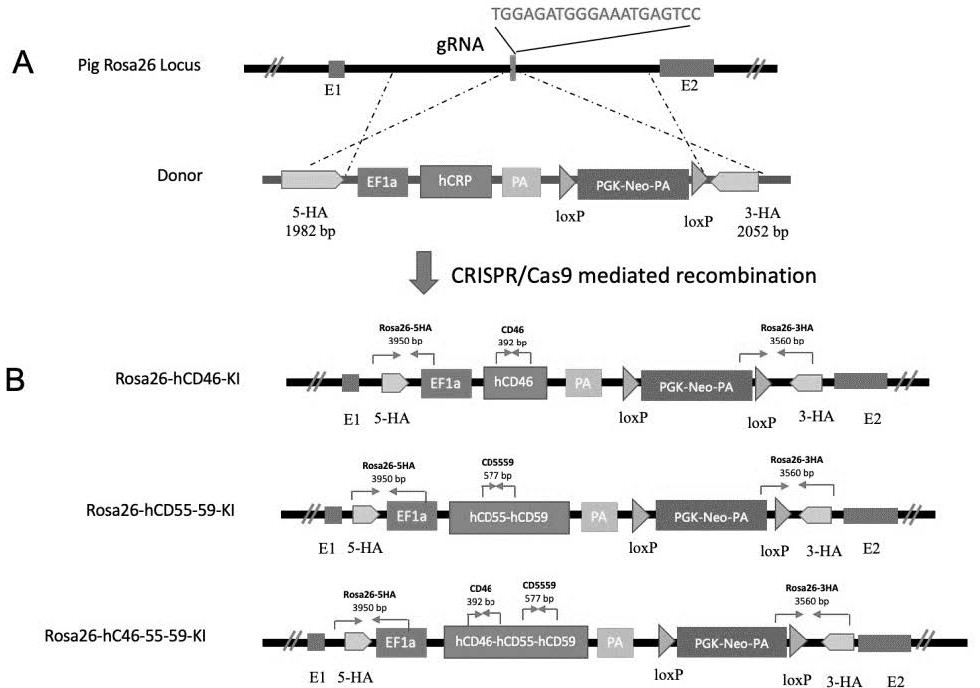A kind of preparation method of rosa26 site-directed knock-in human complement regulatory protein minipig
A technology that regulates proteins, px330-prosa26-grna, is applied in the field of genetic engineering, which can solve problems such as immune rejection, and achieve the effect of promoting the research and development process and avoiding unclear genetic background
- Summary
- Abstract
- Description
- Claims
- Application Information
AI Technical Summary
Problems solved by technology
Method used
Image
Examples
Embodiment 1
[0100] Example 1 Porcine Rosa26 site CRISPR / Cas9 gRNA screening and homologous recombination donor vector construction
[0101] 1. Construction of pig Rosa26 site CRISPR / Cas9 expression vector and gRNA screening
[0102] The porcine Rosa26 locus is located on chromosome 13, and the genome sequence information of Rosa26 was obtained according to the genome sequence information in the Ensemble and UCSC databases. According to the mechanism of action of CRISPR / Cas9, a total of 6 gRNA candidate sites targeting porcine Rosa26 intron 1 were designed through the online design website, and the sequences of the 6 guide RNAs (Guide RNA, gRNA) are shown in Table 1.
[0103] Table 1 Candidate site sequences of pRosa26 gRNA
[0104]
[0105] Select px330 as the backbone vector, and the px330 is a pX330 vector capable of carrying CRISPR / Cas9, px330 is digested with the restriction endonuclease BbsI, and bathed in water at 37°C for 4 h. The digested products were subjected to agarose ge...
Embodiment 2
[0112] Example 2 Transfection of pig fetal fibroblasts and screening of monoclonal target cells
[0113] 1. Establishment of porcine fetal fibroblast lines
[0114] The 35-day pregnant Bama miniature pig was anesthetized, and the fetus was aseptically removed from the uterus. After washing the fetus with PBS containing double antibodies, it was placed in an ultra-clean workbench, and the head, limbs, internal organs and organs of the fetus were removed with ophthalmic scissors. Wash the cartilage tissue with PBS; add an appropriate amount of FBS to the cell culture dish to keep the tissue from being too dry, and use ophthalmic scissors to cut the remaining tissue as much as possible. Add 8-10 mL of collagenase solution to each fetal sample, digest at 37°C for 4 h, take it out and shake it several times during the period.
[0115] Add the digested tissue pieces to 10 mL DMEM containing 15% FBS to stop the digestion, centrifuge at 1000 rpm for 5 min, discard the supernatant, an...
Embodiment 3
[0120] Example 3 Identification of Single Clones of Site-directed Knock-in hCRP Positive Cells
[0121] Due to the double-strand break caused by Cas9 cleavage, under the mediation of homologous recombination vector, the HDR repair method will accurately insert the genome, so it is necessary to use the genome of the single clone of the target cell as a template to perform PCR amplification of the exogenous gene respectively , and sequence the 5' and 3' junction regions of homologous recombination to detect gene editing.
[0122] The px330-Rosa26-4gRNA (4 µg) and the corresponding homologous recombination targeting pGSI-Rosa26-hCRP (6 µg) vector DNA were electrotransfected into pig fetal fibroblasts. Monoclonal cell lines were selected after 10-15 days by diluting the cells and adding puromycin-resistant drugs. The genotypes of cells obtained from each monoclonal source were detected, and the primers for PCR amplification are shown in Table 3. Genomic DNA of 27, 20 and 21 mono...
PUM
 Login to View More
Login to View More Abstract
Description
Claims
Application Information
 Login to View More
Login to View More - R&D
- Intellectual Property
- Life Sciences
- Materials
- Tech Scout
- Unparalleled Data Quality
- Higher Quality Content
- 60% Fewer Hallucinations
Browse by: Latest US Patents, China's latest patents, Technical Efficacy Thesaurus, Application Domain, Technology Topic, Popular Technical Reports.
© 2025 PatSnap. All rights reserved.Legal|Privacy policy|Modern Slavery Act Transparency Statement|Sitemap|About US| Contact US: help@patsnap.com



